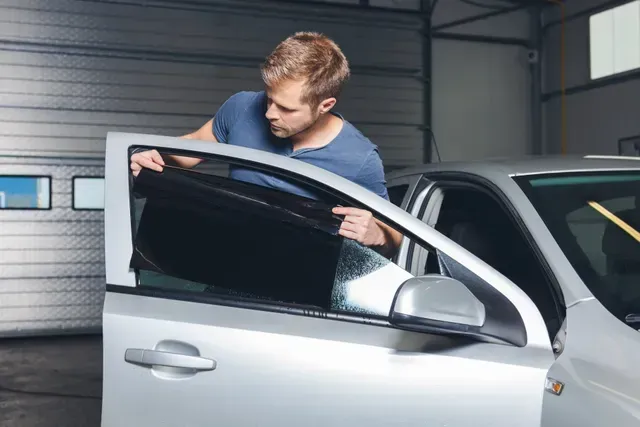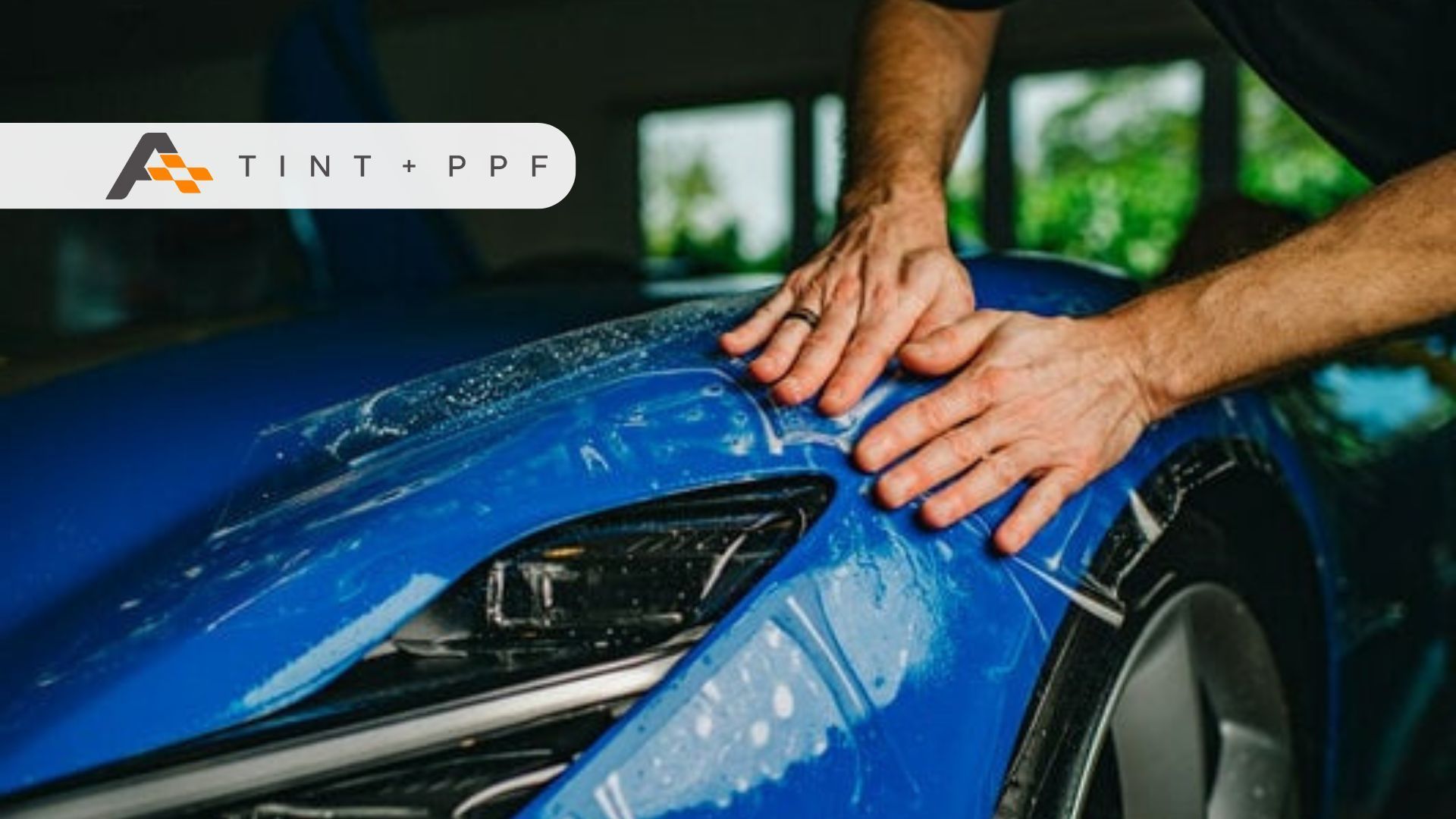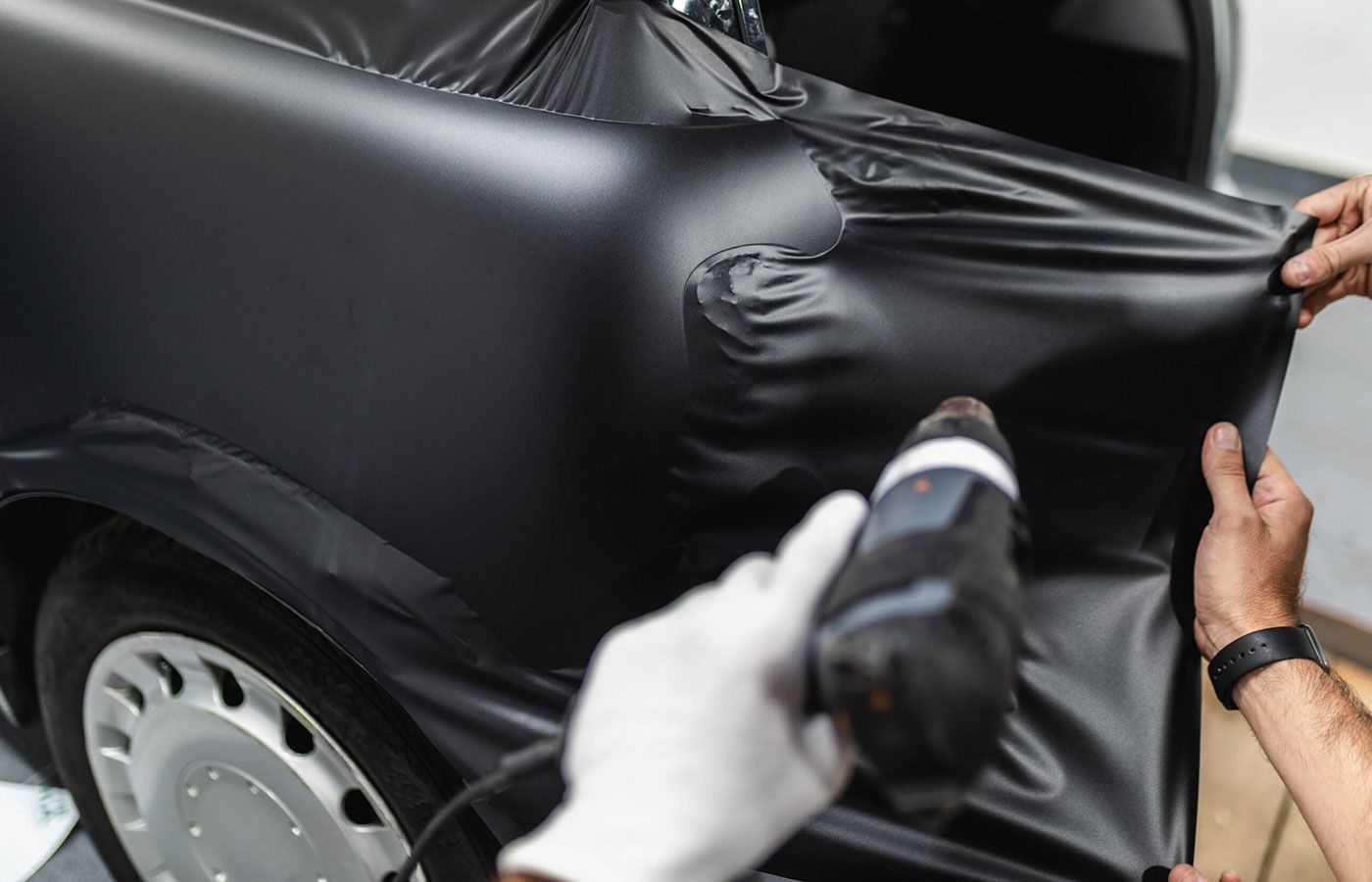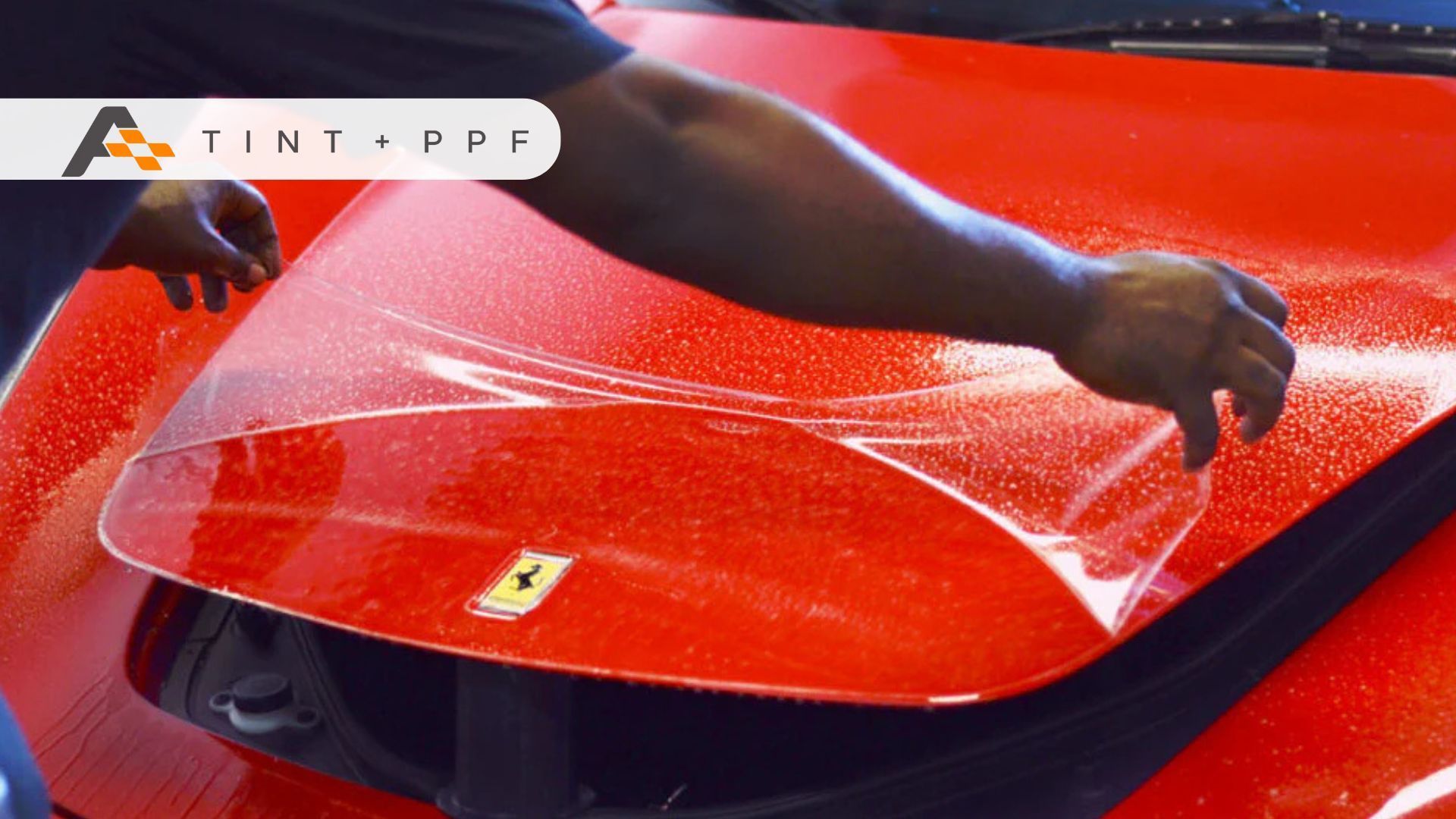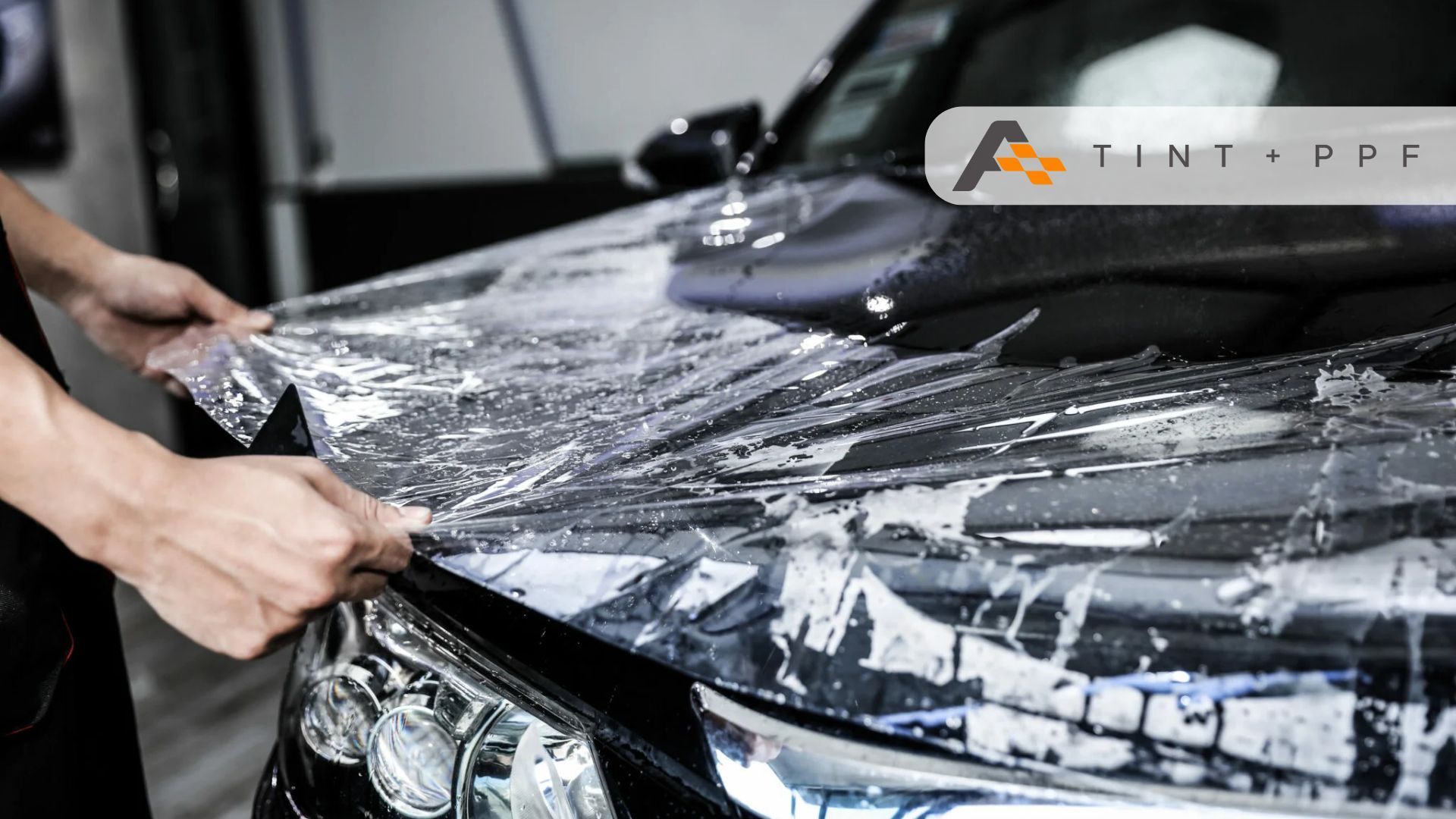Debunking Myths Surrounding Paint Protection Films for Vehicles
If you're driving around Forest Hill these days, you've probably noticed more Teslas, luxury SUVs, and high-end sedans on the road than ever before. And guess what? A good number of them have paint protection film installed—and for good reason.
Paint protection film (or PPF) is a nearly invisible, ultra-durable layer applied to a car’s exterior surfaces. It acts as a shield against scratches, stone chips, road salt, bug splatter, and other everyday hazards that can dull or damage your paint over time. And around here, with changing Maryland seasons and plenty of road construction, that protection goes a long way.
We’ve especially seen a big uptick in Tesla PPF installations in the last couple of years. With more drivers in Harford County switching to electric vehicles, Teslas have become a common sight in Forest Hill, and their sleek, paint-sensitive surfaces make them ideal candidates for PPF.
At A-Plus Tint, we hear a lot of questions—and a lot of myths—about paint protection film. So, let’s break down the most common ones we hear in the shop and set the record straight.
Myth #1: Paint Protection Film is Only for Luxury or Show Cars
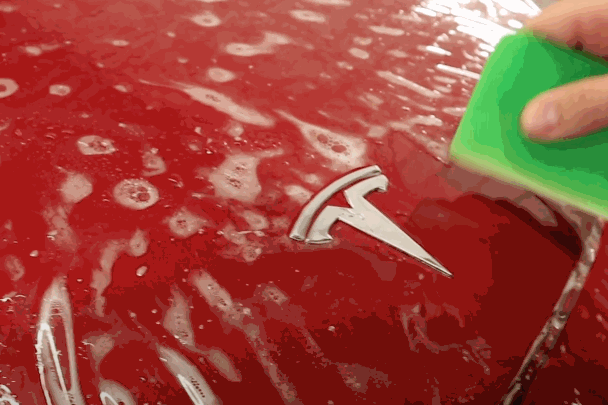
This is one of the biggest misconceptions we deal with. Sure, you’ll see PPF on Teslas, BMWs, and Corvettes at car shows like Hunt Valley Cars & Coffee. But that doesn’t mean it’s only for garage queens. We apply paint protection film every week on:
- Family SUVs driving kids to school in Forest Lakes Elementary
- Pickup trucks commuting down Route 24 to Bel Air
- Sedans that brave I-95 every morning heading to Baltimore
The truth is, paint protection film is for anyone who wants to preserve their car’s value, avoid expensive paint repairs, and keep their ride looking sharp year-round. Whether you’re a weekend road-tripper, a daily commuter, or someone who just loves taking care of their car, PPF makes sense—especially in Maryland, where gravel, salt, and unexpected construction debris are part of the deal.
Myth #2: PPF is the Same as a Clear Bra or Vinyl Wrap
It’s easy to lump everything in the same category, but not all films are created equal. Here’s a quick breakdown:
- Vinyl wraps are mostly for style. They come in colors or textures and are great for changing your car’s look, but they don’t offer much in terms of impact protection.
- Old-school clear bras were thick and sometimes yellowed over time. PPF has come a long way since then.
- Modern paint protection film, like what we install
at A-Plus Tint, is optically clear, self-healing, and built to absorb impacts without compromising your paint.
PPF is also significantly thicker than vinyl wrap—usually around 8 mils—making it far more effective against rock chips, scratches, and salt damage. Plus, it includes self-healing properties that activate with heat, so minor swirl marks disappear on their own.
Myth #3: It’s Too Expensive and Not Worth the Investment
We get it—paint protection film
sounds like a big investment up front. But let’s talk about what it’s actually protecting you from. Here in Harford County, our cars take a beating. Between salted roads in the winter, gravel from ongoing construction near Route 24 and US-1, and the freeze-thaw cycles that lead to cracked pavement and flying debris, your paint is constantly under attack. One deep rock chip on your hood or a series of swirl marks across your fenders can easily lead to rust or full panel repaints.
A quality repaint job? That can run $1,000 to $5,000 per panel. High-quality PPF for high-impact zones? Much less—and it can last up to a decade.
If you’re leasing a Tesla or planning to sell your vehicle down the line, preserving the original paint goes a long way toward maintaining resale value. Buyers around Forest Hill and Bel Air are paying attention to condition—and Tesla PPF can be a smart way to keep your Model Y or Model 3 looking sharp with minimal touch-ups.
When you break it down, PPF isn’t just about looks—it’s about protecting your long-term investment.
Myth #4: PPF Makes Your Car Look Weird or Too Glossy
One of the most common things we hear, especially from Tesla owners in the Forest Hill area, is: “I don’t want my car to look like it’s wrapped in plastic."
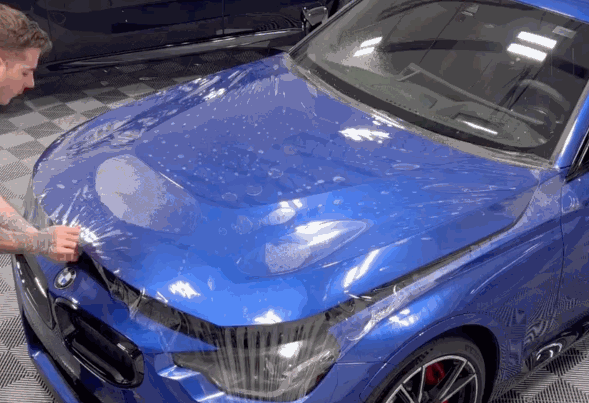
Totally fair. But the good news? It won’t. Modern paint protection film is virtually invisible when installed properly. At A-Plus Tint, we custom-cut each piece to your vehicle’s curves and edges, ensuring no weird lines or visible borders. If you want a gloss finish that makes your paint pop—we’ve got that. If you prefer a stealth, satin look (very popular with local Model Y drivers)—we’ve got that too.
PPF comes in different finishes now:
- Gloss: Enhances the original color and shine.
- Matte/Satin: Gives your car a smooth, modern “stealth” look.
- Custom: Certain films allow color-tinted PPF for even more personalization.
Our team is trained in advanced application techniques, so whether you’re protecting a black-on-black Tesla or a white Highlander, the film blends seamlessly into the original paint. In short: no bubbles, no orange peel texture, and no weird shine. Just protection you barely notice—until it saves you from a chip.
Myth #5: Paint Protection Film Lasts Forever and Requires No Maintenance
We wish this one were true, but like anything that lives on your car’s exterior, paint protection film needs some basic care.
PPF typically lasts 5 to 10 years, depending on the film quality, how the car is driven, and whether it’s garage-kept. Here in Forest Hill, where we get hot summers, rainy springs, and snow-packed winters, that exposure can shorten or extend the film’s life depending on how you care for it. Basic maintenance tips for Maryland drivers:
- Wash regularly using pH-neutral soap to prevent buildup from salt or bugs.
- Avoid abrasive brushes at automatic car washes (we recommend touchless).
- Apply a ceramic coating on top of PPF for added slickness and easier maintenance.
- Schedule an annual check-up—especially after a harsh winter or storm season.
While it’s much lower maintenance than regular waxing or paint correction, PPF isn’t “set it and forget it.” It’s an investment—one that, with minimal upkeep, can pay off for years to come.
Myth #6: Any Shop Can Install It—Even DIY Kits Work Fine
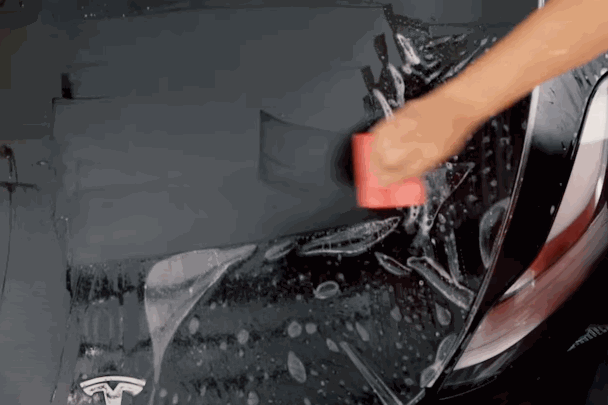
This is a big one—and where a lot of people run into problems. Installing paint protection film isn’t like applying a phone screen protector. It’s a precise, technical process that requires clean conditions, trained hands, and the right tools. The curves on a bumper, the edges around headlights, and the tight corners near emblems? That’s where cheap DIY kits usually fail—and it's even more obvious on vehicles with sleek paneling like Teslas.
We’ve had plenty of Forest Hill drivers come into A-Plus Tint after a DIY install went sideways—lifted edges, air bubbles, visible seams, and worst of all, cut marks on the paint from trying to trim film with the wrong tools.
At A-Plus Tint, we’ve installed Tesla PPF on countless Model 3s, Ys, and even custom builds from around Harford County. Our team is trained to work with precision on high-end vehicles, using software-cut patterns for a perfect fit and full panel coverage without risking your factory paint. That includes bumpers, mirrors, hoods, and rocker panels—the areas most vulnerable to chips and scratches.
The difference between a professional install and a DIY kit? Night and day—and in terms of durability, resale value, and peace of mind, it’s worth every bit.
Conclusion: What’s the Truth About Paint Protection Film?
Here’s the honest answer we give every customer who walks into our shop in Forest Hill:
Paint protection film isn’t about showing off. It’s about protecting what matters—your car, your investment, and your time.
Whether you’re commuting to Baltimore from Bel Air, navigating backroads in Abingdon, or picking up kids from school in Forest Hill, the reality is that our roads aren’t exactly gentle. Salt, gravel, tree sap, and road debris don’t care what you drive. But PPF does.
It’s not just for luxury rides. It’s for:
- Commuters who want to avoid rock chips and scratches
- Tesla owners who want to preserve the value of their EV
- Families who want to keep their SUV looking clean through all four seasons
- Car lovers who appreciate a well-maintained finish, year after year
At A-Plus Tint, we’re proud to be the local experts for Tesla PPF and premium paint protection in Harford County. If you’re curious about protecting your car, we’re happy to walk you through your options—no pressure, no sales pitch.
Get in touch for a free quote or just swing by the shop. We’ll help you figure out if PPF is the right fit for your car—and your life.
A-Plus Tint & PPF
5.0 ⭐⭐⭐⭐⭐ 828 Google reviews
Window tinting service in Maryland
